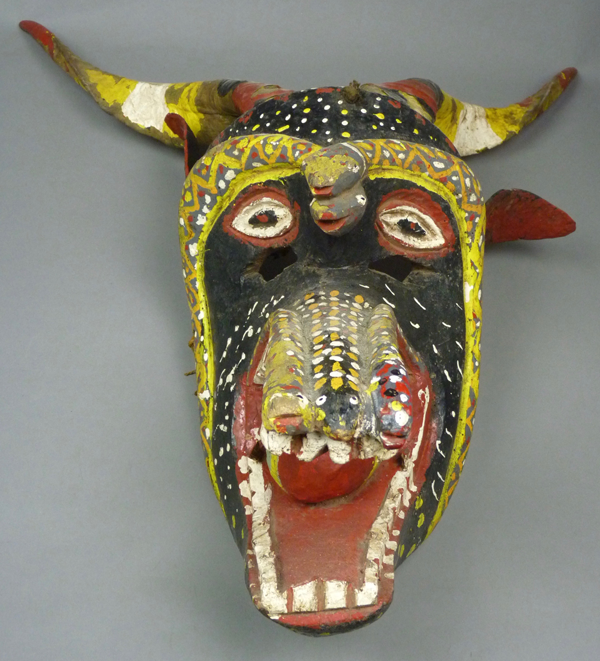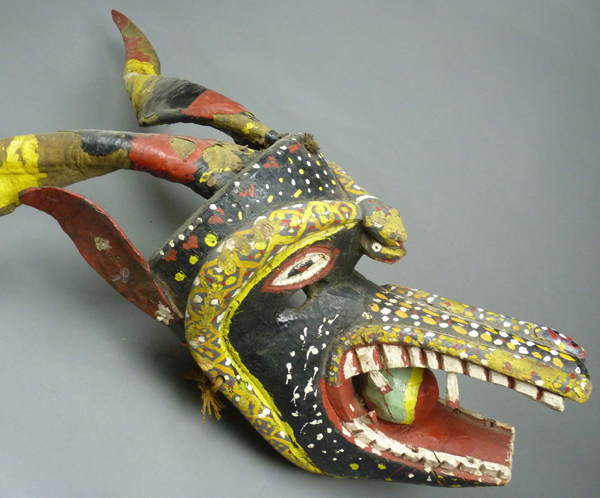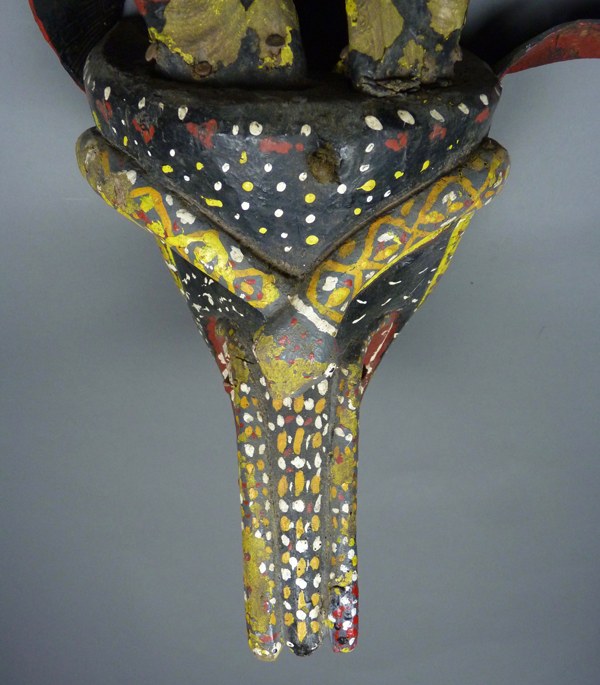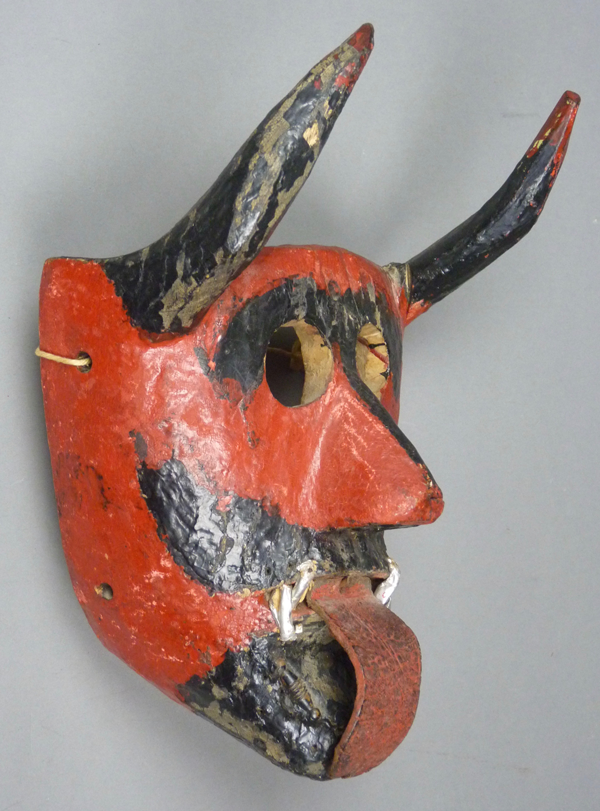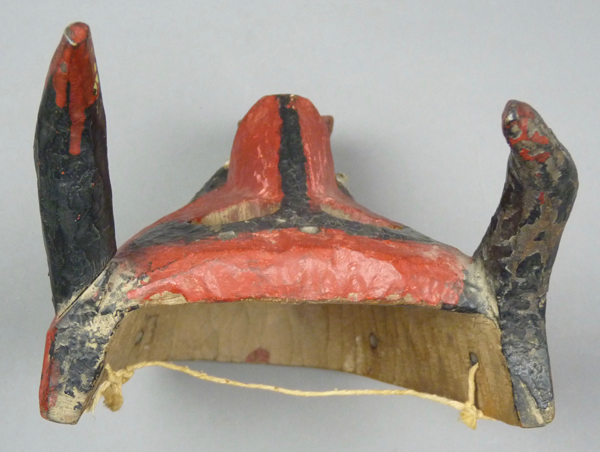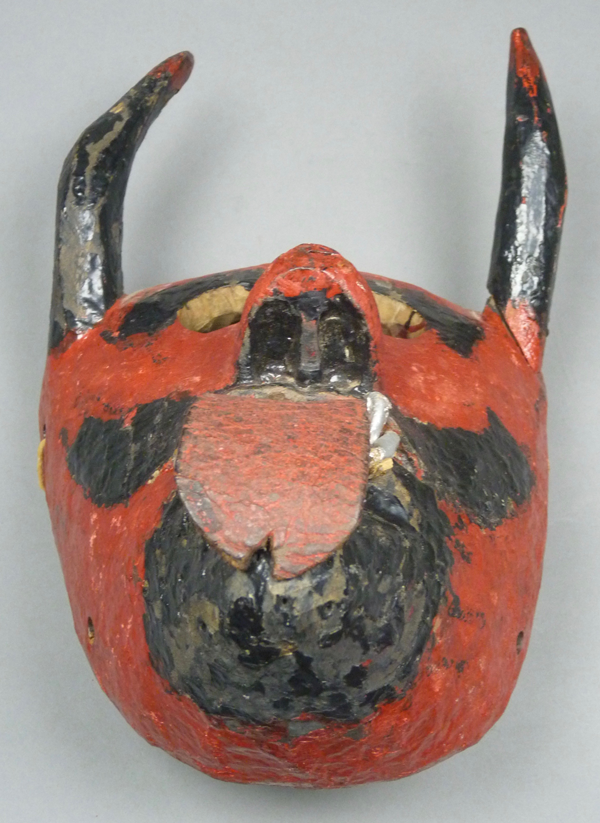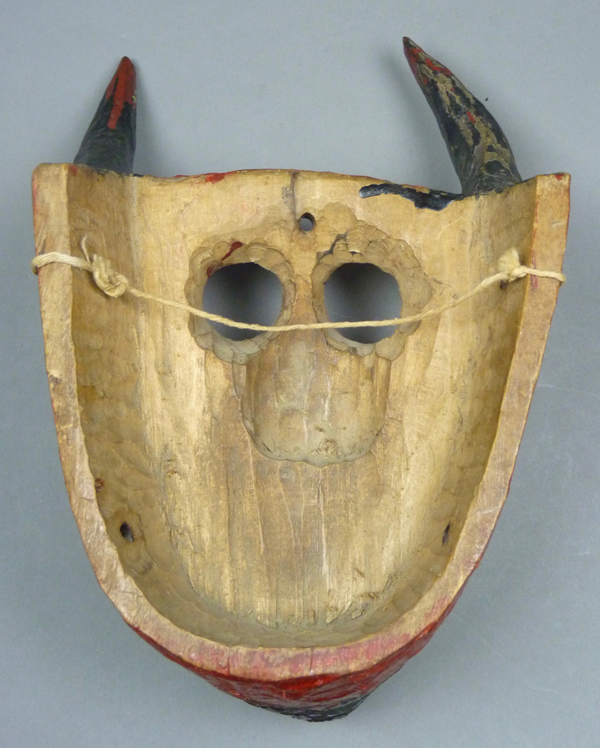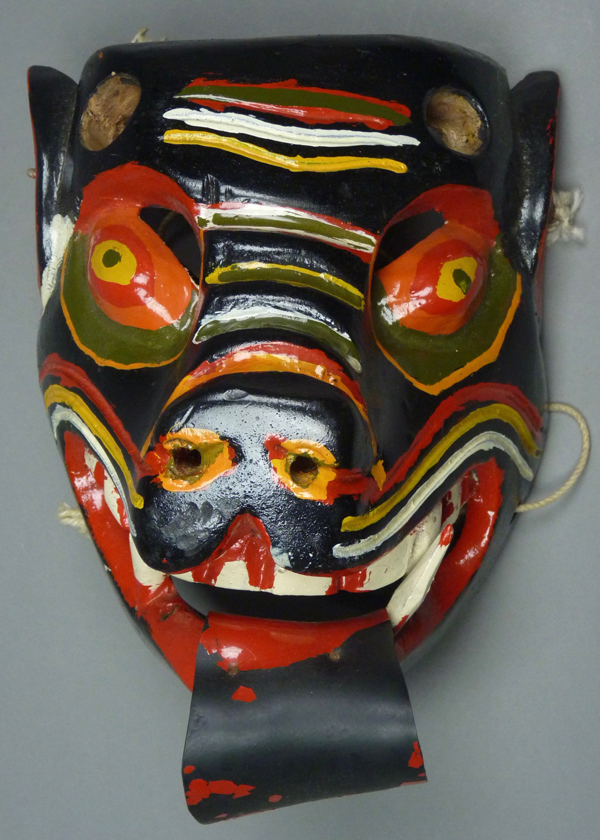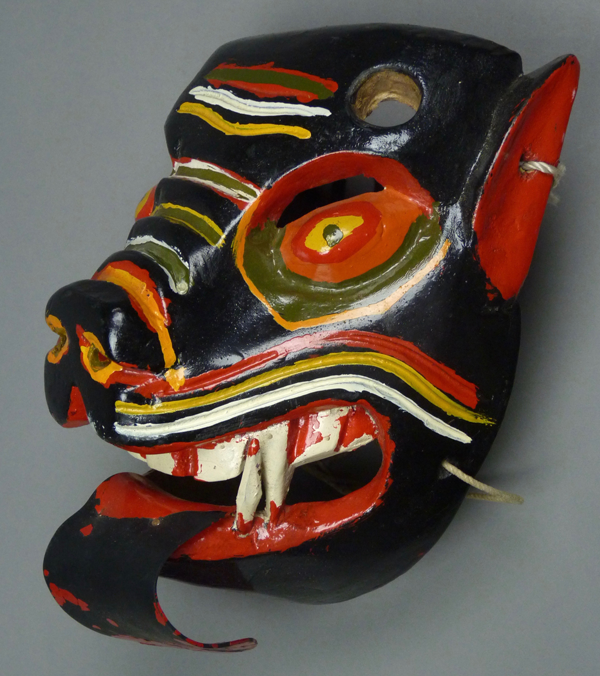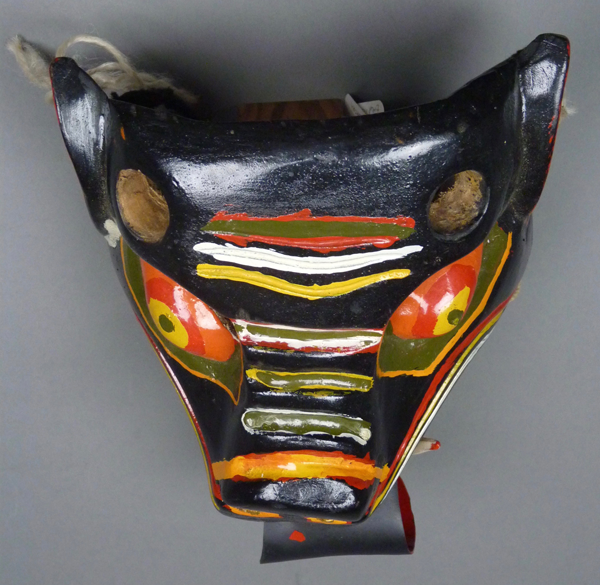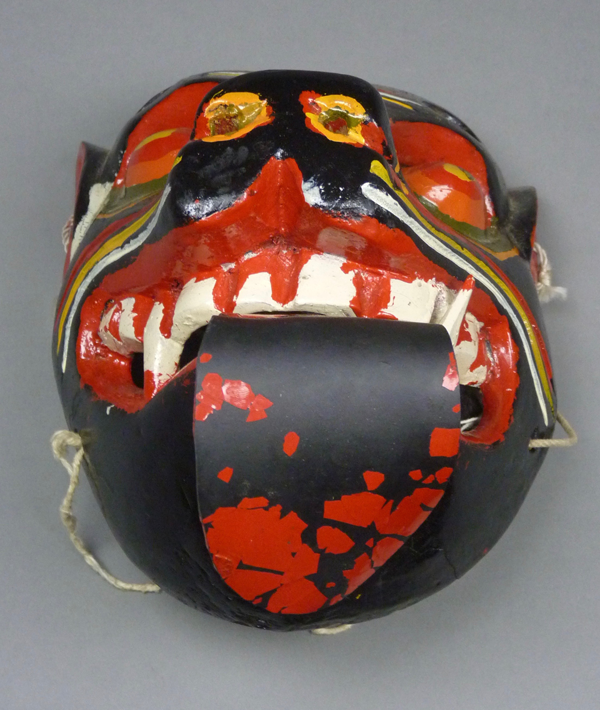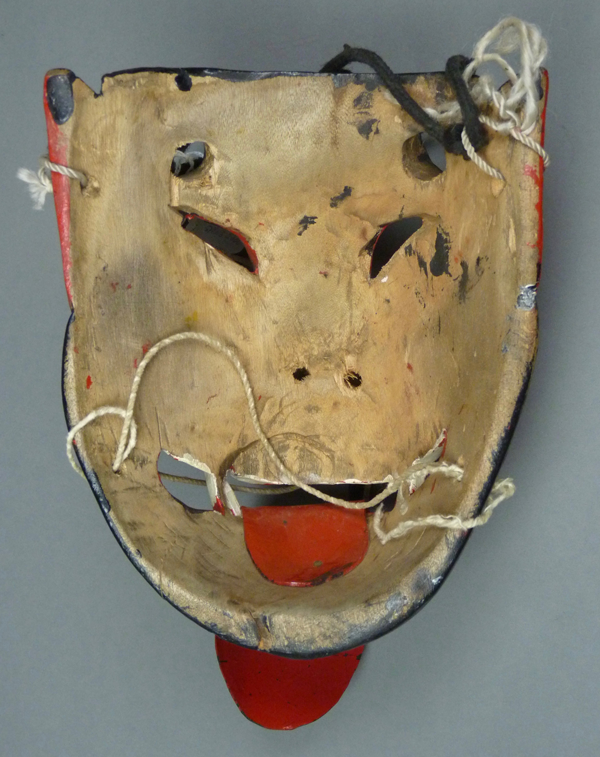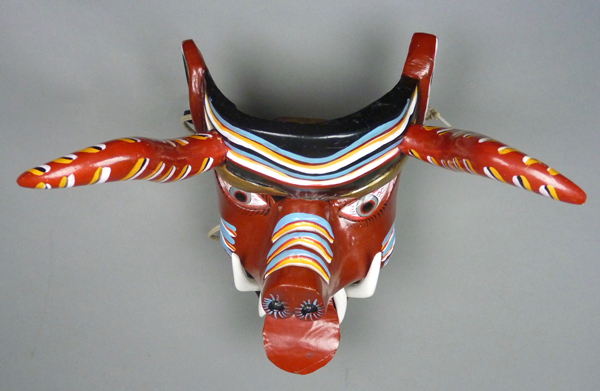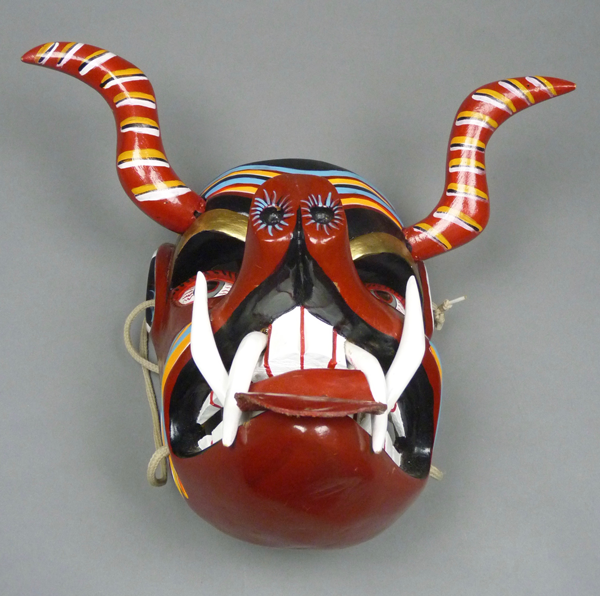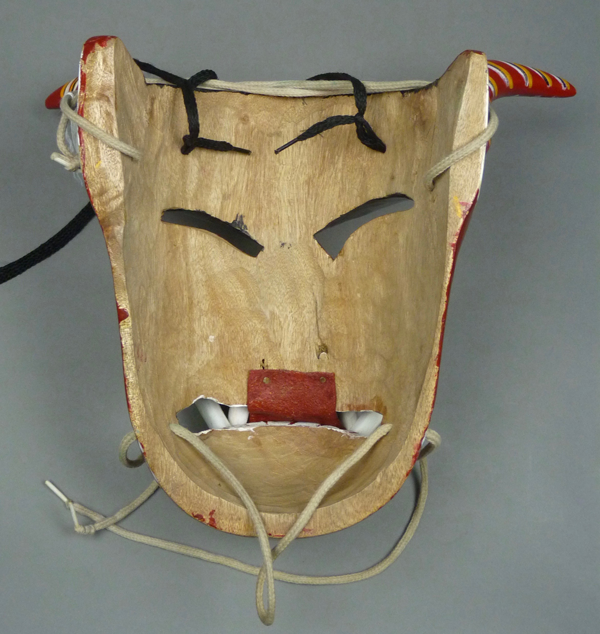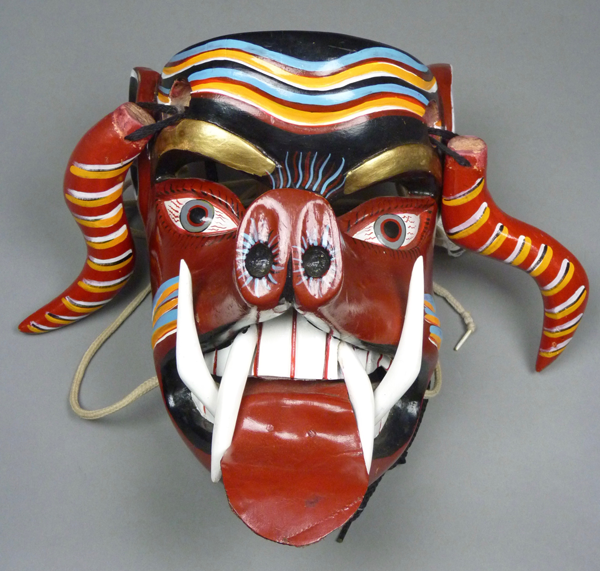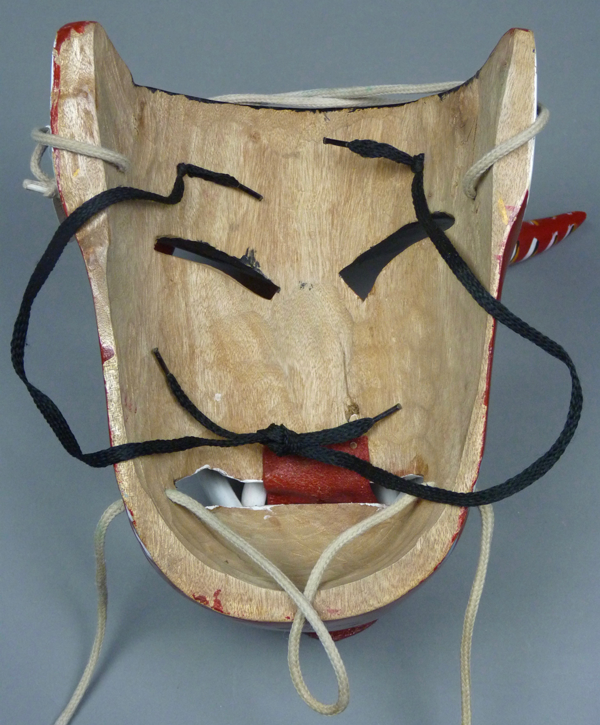The first of today’s Pastorela Diablo masks, from Puruandiro, Michoacán is exceedingly large and ornately decorated. It also demonstrates a feature that was once more common on Michoacán Diablo masks—the presence of a ball between the devil’s teeth. I purchased this mask from Jaled Muyaes and Estela Ogazon in 2003. In sharp contrast, the next mask is very small. I bought this on EBay™, also in 2003. It came with little provenance, but it was said to be from Michoacán. In Barbara Mauldin’s book, Tigers, Devils, and the Dance of Life: Masks of Mexico (page 87, right), there are two smaller Diablos from Michoacán that have this general appearance, one said to date to the 1930s and the other to the 1940s, and both were from the collection of Alexander Girard. Here are today’s first two masks together to illustrate the contrast in size.
The very large Diablo has five snakes—three in a row crawling down the nose and two more curling over the eyes. All five are garishly painted.
I don’t believe that I have ever seen another Diablo mask that has one snake resting its head on that of another, or one with three snakes, side by side. Theses snakes look so amiable in such groupings. In other words, this mask has a particularly playful design.
This Diablo carries a ball between its jaws. I don’t know what this is meant to convey, but I have seen other old Diablos with a ball in the mouth.
This is a coyote-faced devil with a long thin snout.
There are crescent shaped air passages flanking the top of the ball. This mask is 12½ inches tall, 8½ inches wide, and 9½ inches deep, not including the horns or the leather ears. Including the horns, the height is 19½ inches and the width is 22 inches.
The back, which demonstrates obvious and substantial wear, has an attached pad across the forehead to make it more comfortable to wear.
Here are more photos of the very small Diablo. It has carved wooden horns, fangs covered with cigarette foil, and a tongue of recycled leather.
In contrast to the elaborate carved features on some of the other Diablos from Michoacan, this mask has painted eyebrows, mustache, and beard, and there are no snakes.
Despite its simplicity, this is a handsome and effective mask.
The horns are nailed to the face of the mask.
This mask is 7 inches tall, 6½ inches wide, and 4 inches deep, without the horns, which add about 4 inches to the height.
Although this mask has some staining from use, and may well have been collected long ago, we have no way of knowing whether it is as old as those two similar masks in Mauldin’s book. On the other hand, the chiseled surface of the back is highly typical for masks from Michoacán.
The last two masks, which have the faces of Pigs, were collected by Dinah Gaston in Janitzio, one of five islands in Lake Pátzcuaro. The dancers come from Tarascan fishermens’ families. Dinah observed the Pastorela dance there, probably in December 1999, and then obtained both masks from the carver. Unfortunately I don’t know his name. I bought these from Dinah in the spring of 2000. The first is missing its horns, and the reason for this is of interest. In that town, bystanders attempt to steal the devils’ horns as a prank, snatching them from their sockets on the mask.
Here is the one that has lost its horns. It was made in 1994 and danced for five years, first with horns and then without.
The masks of this carver are very colorful. The tongue is painted red to create the appearance of blood.
As you can see, the sockets that held a pair of horns are empty.
The tongue is made of rubber, probably recycled from an automobile inner tube.
This mask is 8½ inches tall, 6¾ inches wide, and 4½ inches deep.
The back is stained from five years of use.
The final Diablo mask was carved and danced by the same carver as the last. The horns on this mask can be removed from their sockets but they are attached to the mask by cords to prevent such thefts, and the dancer can even tie those cords around the back of his head to further secure them.
Here s the complete mask with the horns in place.
This mask has a leather tongue.
The paint is equally colorful on this mask.
This mask is nearly the same size as the other—8½ inches tall, 6¾ inches wide, and 4½ inches deep, not including the horns, which add several more inches to the height.
There is only mild staining, because the mask was worn in just one fiesta (Christmas 1999). The white cords have the purpose of tying the mask to the dancer’s face. The two black shoestrings secure the horns to the mask. Looking at the black strings, note the knots. The strings are slack when the horns are in place in their sockets.
In the photos that follow, the horns have been pulled from their sockets. They dangle because they are still tied to the mask by the black laces.
Apparently this arrangement successfully protected the horns from being stolen.
Looking again at the back of the mask, the knots in the black strings have been pulled snug against the back of the mask. The cord holding the horns is knotted to show how it would have been tied around the dancer’s head to further secure the horns.
Next week I will show three large Pastorela Diablo masks from the neighboring state of Guanajuato.


